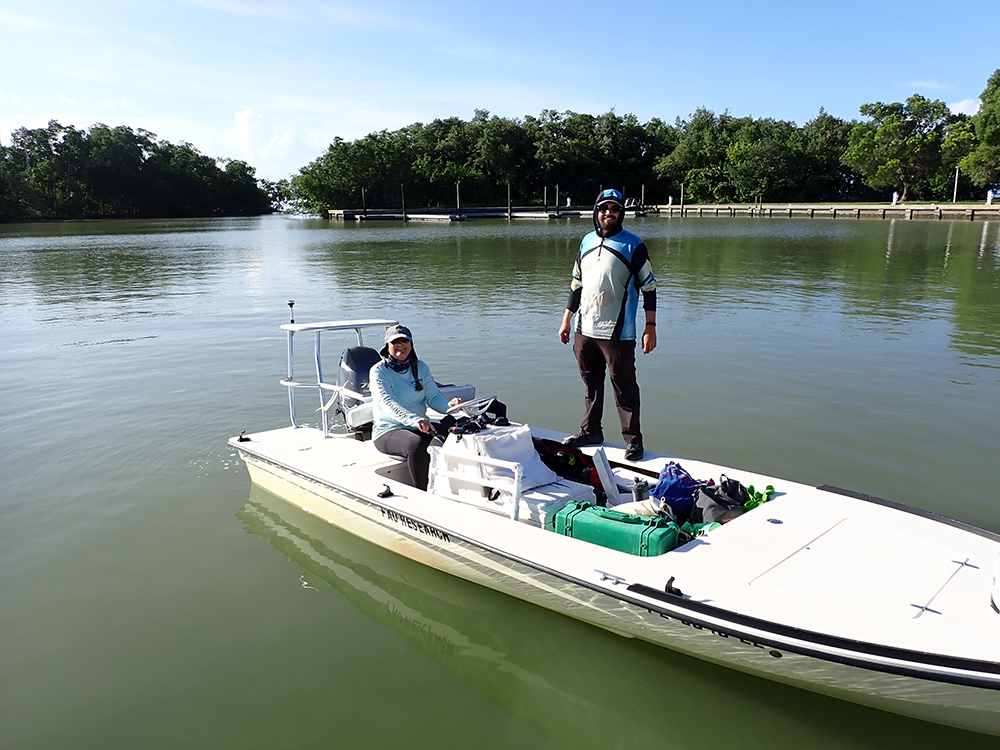
Author: Gael-Lynn Laguerre
Date: October 26, 2023
Why are seagrasses important?
Many of us understand the importance of terrestrial plants as they provide us with food and oxygen. However, we seldom appreciate the contributions made by marine plants, like seagrasses, to maintaining healthy oceans and the biodiversity of its inhabitants! According to the Florida Fish and Wildlife Conservation Commission (FWC), seagrasses are plants adapted to living in coastal marine environments worldwide. They have long, flexible leaves and deep roots designed to minimizing their chances of being ripped out of the sediment due by waves, wind, or currents.
Seagrasses can form meadows just like the ones we see on land! They provide a foundation of thriving habitat for countless species. However, their contributions to a healthy marine environment are often overlooked.

“Seagrasses are called a foundational species...” said FAU Climate Change Professor and Coastal Marine Ecologist, Dr. Marguerite Koch. “They are really important, or essential, for fish; without them, there’d be no habitat for many other organisms.”
Dr. Koch, who has been a professor at FAU since 1996, has studied the biology, chemistry, photosynthesis activity, and nutrient cycling of seagrass communities in tropical environments for more than two decades. She is particularly interested in how climate change has stressed these plants, which are also known as marine autotrophs. Autotrophs are organisms that produce their own food for growth, using sunlight as an energy source. This process is known as photosynthesis. Seagrass communities not only supply food for other organisms; they also provide a “nursery” habitat that functions as a haven for the juvenile stages of economically important fishes and shellfishes, such as lobsters, crabs, clams, and oysters.
“Typically, fish live in the seagrass when they’re really tiny and then migrate to mangroves when they grow bigger,” Koch explained.
Seagrasses also support highly productive ecosystems; they are known as the “lungs of the sea” for absorbing carbon dioxide and producing oxygenated water for life in coastal waters. “Seagrass beds during the day are producing a lot of oxygen, or oxidizing the water column,” Koch continued. “They are also stabilizing the sediments.” Seagrasses do this by using their roots to trap loose sand, dirt, and silt.
How will climate change affect seagrass ecosystems?
Climate change is currently affecting ecosystems worldwide. While seagrasses can adapt well to environmental shifts, Dr. Koch has discovered that they remain vulnerable to rising ocean temperatures, especially if those temperatures remain high for prolonged time periods.
“These plants can adapt to short-term high temperatures,” Koch further illustrated. “But if those temperatures remain consistently high, they act as a physiological stress.” This limits rates of photosynthesis and plant growth. Koch continued, “higher temperatures also promote higher salinities. Both of those things decrease the amount of oxygen in the water. So that can be like an Achilles heel.” According to the FWC, warmer water temperatures also make seagrass more susceptible to disease and that, in turn, leads to the loss of seagrass habitat available for marine organisms, both as foraging sites as well as nursery areas.
It is crucial for the public to learn about how climate change continues to impact seagrass communities in marine ecosystems. Government organizations, such as the FWC, are great resources to further our understanding of the importance seagrasses as marine habitats and what must be done to protect those areas. You can also learn more about Dr. Koch’s ongoing research by visiting the FAU Marine Laboratory, where her scientific endeavors are currently described and on display!